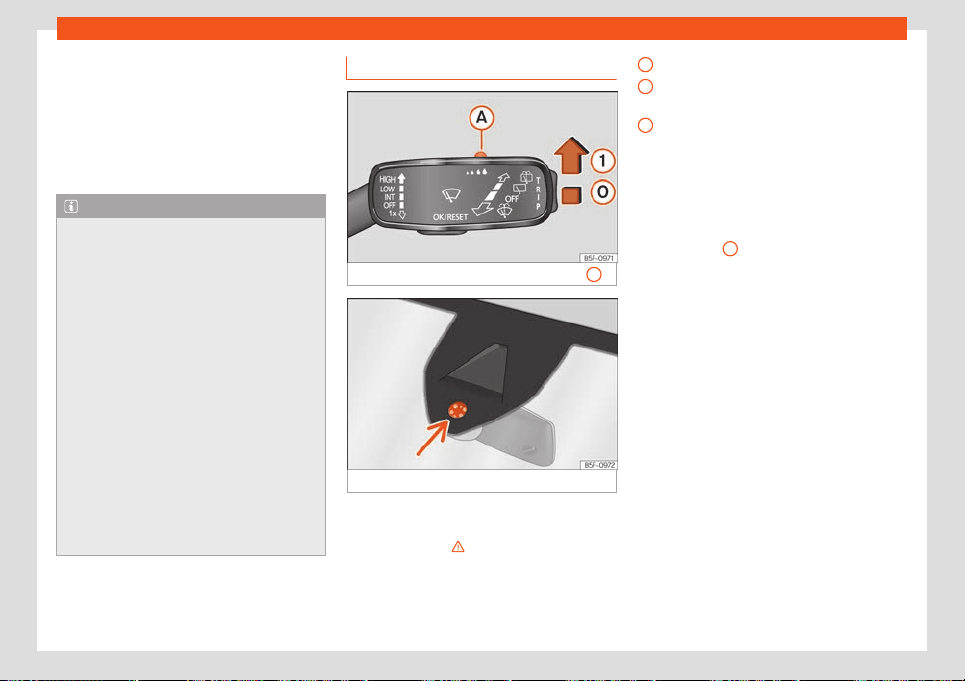Loading ...
Loading ...
Loading ...

Operation
Regularly clean dirt that has become encrus-
t
ed on the headlights, e
.g., r
emains of insects.
T
o ensur
e the headlight washers work cor-
rectly in winter, clean away any snow that
may be present on the jet covers located on
the bumper. If necessary, remove ice with an
anti-ice spray.
Note
●
The wiper will try to wipe away any ob-
stacles that ar
e on the windscreen. The
wiper will stop moving if the obstacle
blocks its path. Remove the obstacle and
switch the wiper back on again.
●
If you stop the vehicle with the wind-
screen wiper in position 1 or 2, it will auto-
matically change to a lower position
speed. The set speed will be resumed when
the vehicle pulls away.
●
The windscreen will be wiped again ap-
proximately 5 seconds after the wind-
screen washer has been activated, provi-
ded the vehicle is moving (“drip” function).
If you activate the wipers less than 3 sec-
onds after the “drip” function, a new wash
sequence will begin without performing the
last wipe. For the “drip” function to work
again, you have to turn the ignition off and
then on again.
Rain sensor*
Fig. 119
Wiper lever: adjust the rain sensor
A.
Fig. 120
Rain sensor sensitive surface
The rain sensor controls the frequency of the
windscr
een wiper int
erv
al
s, depending on the
amount of r
ain
›››
. The sensitivity of the rain
sensor can be adjust
ed manually. Manual
wipe
›
›
›
page 126
.
Move the lever to the required position
›››
Fig. 119:
Rain sensor off.
Rain sensor on; automatic wipe if neces-
sary.
Setting sensitivity level of rain sensor
–
Set control to the right: high sensitivity.
–
Set control to the left: low sensitivity.
When the ignition is switched off and then
back on, the rain sensor stays on and starts
operating again when the windscreen wipers
are in position
1
and the vehicle is travelling
at mor
e than 16 km/h (
10 mph).
Modified behaviour of the r
ain sensor
P
ossibl
e causes of faults and mistaken read-
ings on the sensitive surface
›››
Fig. 120 of the
rain sensor include:
●
Damaged wipers: a film of water on the
damaged blades may lengthen the activa-
tion time, reduce the washing intervals or re-
sult in a fast and continuous wipe.
●
Insects: insects on the sensor may trigger
the windscreen wiper.
●
Salt on the road: in winter, salt spread on
the roads may cause an excessively long
wipe when the windscreen is almost dry.
●
Dirt: dry dust, wax, coating on glass (Lotus
effect) or traces of detergent (car wash) may
reduce the effectiveness of the rain sensor or
make it react more slowly, later or not at all.
0
1
A
128
Loading ...
Loading ...
Loading ...